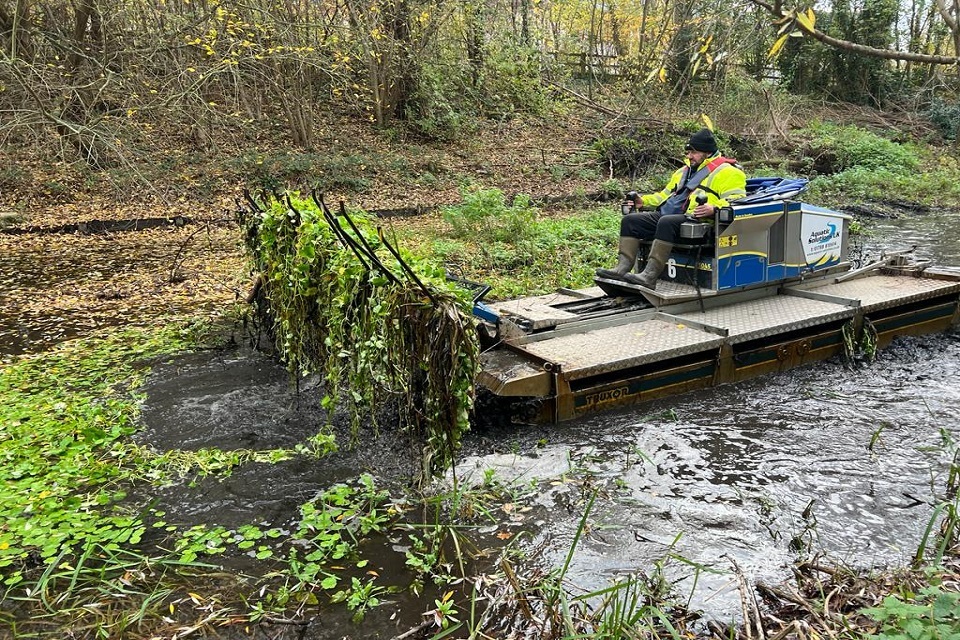700 tonnes of pennywort removed from west London river
Invasive weed cleared from watercourse near Heathrow

A vast carpet of the floating pennywort weed is shown across the Duke of Northumberland river in west London
Ahead of the Christmas break, the Environment Agency has just finished removing more than 700 tonnes of floating pennywort from the Duke of Northumberland River in west London. Approximately 730 metres of the river had become hidden beneath a 550-metre-long carpet of the weed.
Although pennywort can be removed from watercourses by hand, the size of this outbreak proved a real challenge. For 10 working days, contractors used a Truxor amphibious machine with a mechanised front rake attachment to clear the watercourse of the invasive plant.

Harmful floating pennywort was imported into the UK almost 40 years ago
This work took place alongside a manual operative team equipped with drag rakes and scoop nets to collect and clear swathes of floating pennywort at varying depths of the river channel.
Floating pennywort, a highly-invasive species, was brought to the UK from the Americas in the 1980s by the aquatic nursey trade. Although it has been banned for sale for nearly a decade, it’s now in our watercourses and impossible to remove entirely.
Rachel Keen, an area Environment Agency operations manager, said:
This was important work to do in the run-up to Christmas to maintain the health of the river channel and the fish and wildlife that depend on it. Clearing out this vast amount of weed not only removes an invasive species that harms the local environment, but one which can also cause obstruction to river flows.
Our field teams routinely carry out pennywort-removal in our London rivers, and this summer’s extremely hot weather really boosted its growth. We’d encourage the public to be on the lookout for pennywort, hogweed and other invasive species, and report possible sightings to our incident hotline on 0800 80 70 60.
Free invasive species monitoring apps are available online.
Floating pennywort-removal and river maintenance is just part of a range of winter-readiness work the Environment Agency has carried out in the local area to protect communities from flooding over the wetter winter months. Specialist Environment Agency teams have been out checking that all flood-protection assets are fully functional, and they continue to monitor and clean weirs and grills ahead of adverse winter weather.